
by Victoria Silverwolf
(More Than) One Big Happy Family
A lot of dramatic events happened this month, many of them violent and tragic, from a huge earthquake in the Aleutian Islands (fortunately, far away from inhabited areas) to, just today, the murder of civil rights activist Malcolm X.
Although not as world-shattering as other news stories, one incident that caught my eye was the bizarre story of Lawrence Joseph Bader/John Francis "Fritz" Johnson. Why two different names? Thereby hangs a tale.
It seems that Mister Bader, a salesman from Akron, Ohio, vanished during a storm while on a fishing trip on Lake Erie, back in 1957. His wife had him declared legally dead in 1960. Meanwhile, Mister Johnson showed up as a local TV personality in Omaha, Nebraska.
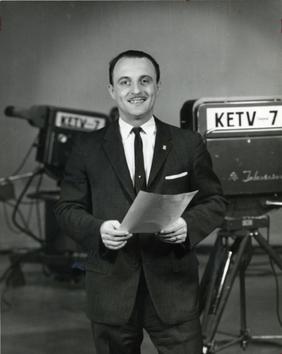
Broadcasting from an ABC affiliate
A guy who knew Bader ran into Johnson, and knew something was fishy (pun intended.) He brought Bader's niece to take a look at him. Sure enough, Johnson was really Bader, now married to another woman. Fingerprints proved the case.
Amnesia or a hoax? The authorities aren't sure. Johnson claims that he has no memory his life as Bader, but other folks point out that he had some problems with the IRS and may have wanted to start his life over. Sounds like a soap opera plot to me. Anybody remember the old radio drama John's Other Wife? Stay tuned!
Two Brothers and One Son
The man with two families came to mind again when I took a look at the American music charts recently. Earlier this month, the Righteous Brothers reached Number One with You've Lost That Lovin' Feelin'.

They're not really brothers, so I may be stretching a point until it breaks.
Later, Gary Lewis and the Playboys hit the top with This Diamond Ring. Gary is the son of comedian Jerry Lewis.
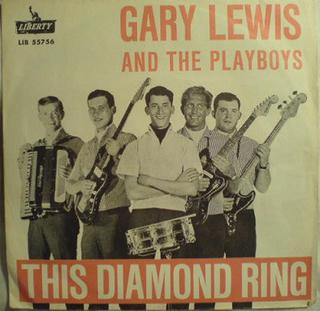
I wonder if any of Dean Martin's seven children will have hit records.
Family Affairs
Fittingly, some of the stories in the latest issue of Fantastic involve close relatives, and others feature characters without families of their own.
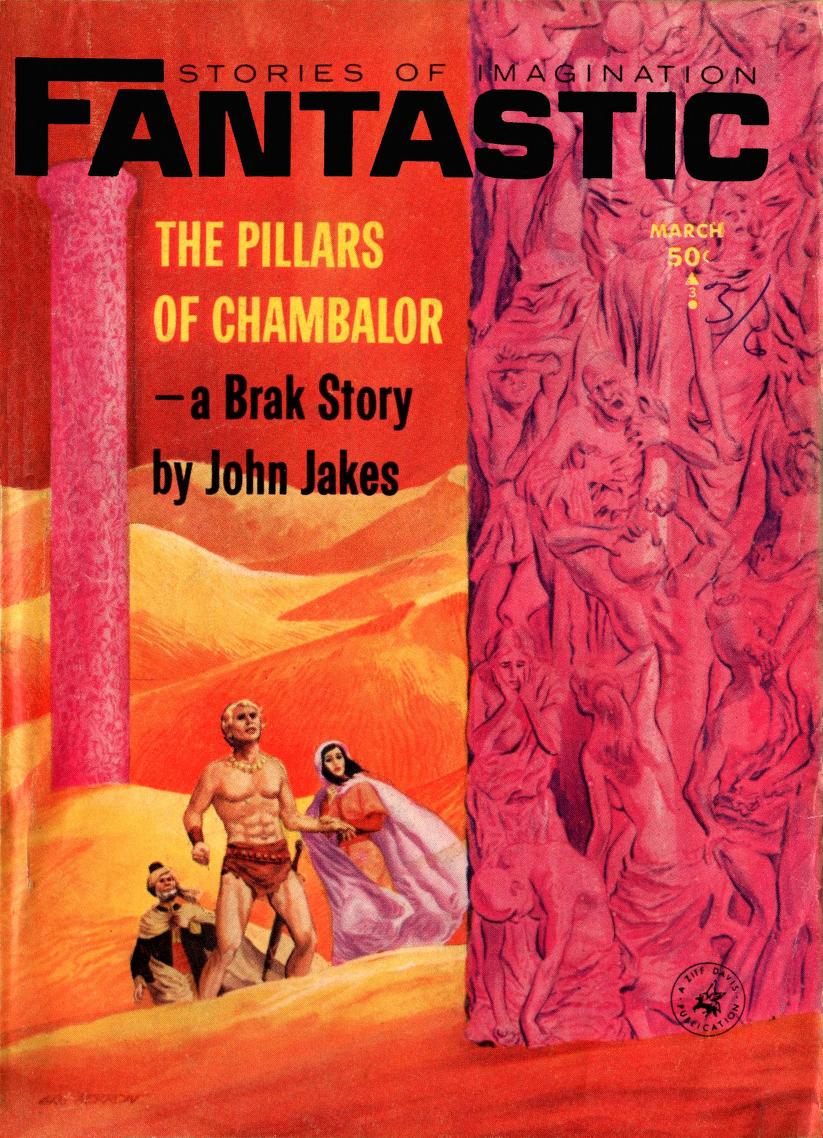
Cover art by Gray Morrow.
Monsters & Monster-Lovers, by Fritz Leiber
Before we get to the fiction, let's take a look at an article from one of our greatest writers of imaginative tales. The title tells you what he's talking about; the current popularity of all things monstrous. It's a wide-ranging piece, listing many of the notable frightening creations of literature, pondering their appeal, noting that they flourish during relatively peaceful times, and dismissing the possibility that the discoveries of science will eliminate them from our minds. Perhaps the author tries to cover too much ground, but his essay is enlightening, elegantly written, and gave me the names of some classics I need to track down.
Four stars.
The Pillars of Chambalor, by John Jakes
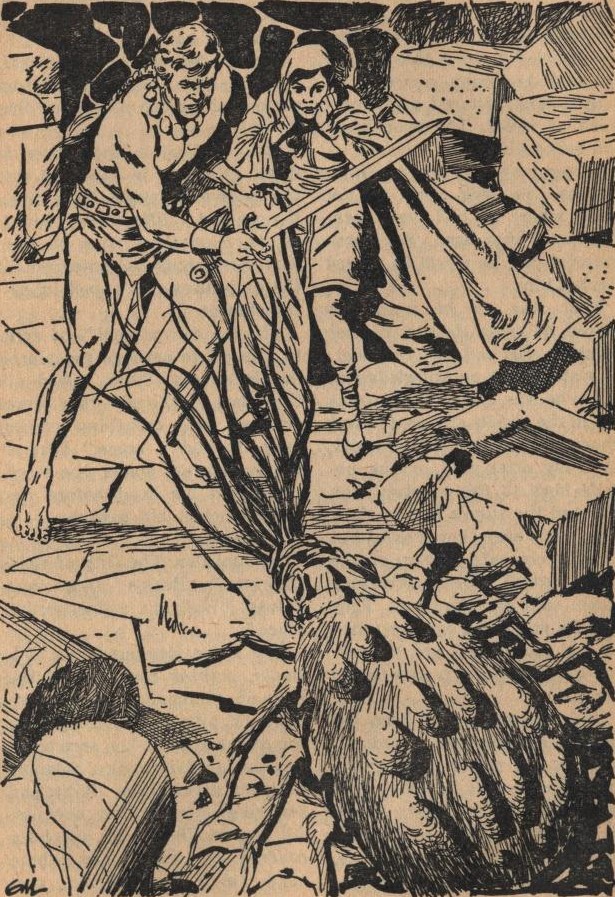
The magazine's only interior illustration is also by Morrow.
Our old pal Conan Junior — excuse me, I mean Brak the Barbarian — shows up again in this issue's lead story. This time he's lost in a desert wasteland, near the ruins of an ancient city. In the time-honored tradition of sword-and-sorcery yarns, a huge monster attacks him, leaving him dying from its venom.
A wicked old man and his sweet young daughter show up. It seems the greedy fellow is after a fabulous treasure within the abandoned city, and needs Brak's mighty strength to open the doors behind which it lies. He'll provide an antidote for the poison if the barbarian swears to perform this service. (It amused me that the plot depends on Brak never breaking his word once he makes a promise, but then feeling free to turn against the old guy once he's opened the doors.)
Complicating matters is the fact that the ruins consist of about one hundred gigantic pillars, each one containing the bodies of the inhabitants of the vanished city, frozen in stone by a wizard. It won't surprise you to learn that they don't stay that way, or that we haven't seen the last of the critter that attacked Brak.
Predictable, but written with vivid imagination, this swashbuckling adventure is a decent way to pass the time. I find Brak a lot more tolerable in short stories than in longer pieces, although I wouldn't want to read a bunch of them at once.
Three stars.
Mary, Mary, by John Baldwinson
Here's a science fiction story that reads like fantasy, from an author completely unknown to me. In the future, folks usually work for fifteen years, saving little or none of their pay, then retire to lives of leisure, supported by a rich and benevolent government. The protagonist has a different plan.
She scrimps and saves, finally leaving her job with enough money to create a garden full of exotic plants from far-flung worlds. Many of these are as intelligent as animals, and some can even move around, acting as servants and watchdogs.
Although she's a loner, spending nearly all her time in the garden, the woman yearns for human company as well. She falls in love with a retired spaceman, and everything seems just fine. Too bad she doesn't realize her floral friends can feel jealousy.
Although the resulting tragedy comes as no surprise, there are some striking images and poetic writing to be found here. Despite the futuristic trappings, this is really a dark fairy tale, full of beings both beautiful and frightening. It reminds me of some of the romantic fables of Robert F. Young, which is OK in my book.
Four stars.
102 H-Bombs, by Thomas M. Disch
There's a lot going on here, so hold on to your hat and I'll try to walk you through it. In a future of constant armed conflict — don't call it war! — all male orphans in the USA begin military training at the age of ten. Our hero is named Charlie C-Company. (He got that last name due to a bureaucratic mix-up when he was inducted into the Army.) At this point, the story's satiric look at the armed forces made me think of Catch-22, a novel by Joseph Heller that came out a few years ago.
Anyway, Charlie is one of the winners of a contest to write an essay entitled "What I Would Do If I Owned the Empire State Building." You see, that famous structure is just about the only thing that survived an attack during this conflict that isn't officially a war. He and one hundred and one other winners — notice the title of the story — are flown to New York New (sic) and, well, things get complicated.
Not only does he make telepathic contact with a girl his own age who is one of the winners, he also finds out the real purpose behind the contest, learns something about himself, and becomes part of a larger, closely related group. The outcome has serious consequences for the whole world.
You get the feeling that Disch knows exactly how clever he is, so this is a story to admire rather than love. It's a real roller coaster of a tale, throwing all kinds of concepts at you left and right, always keeping your attention but making you feel a bit dizzy when it's over. It's worth the ride, anyway.
Three stars.
Look Out Below, by Jack Sharkey
This surreal tale features a main character without family or close companions. He lives alone, on the top floor of a tall building, in a suite where everything is pure white. Happy, but a bit lonely, he rides an elevator to the floor just below his own.
The things here are white, but with pale gray pinstripes. He moves into a suite on this level that isn't quite as luxurious as the one he left. The coffee, for example — like his food, clothing, and other belongings, it apparently appears from nowhere — is just slightly bitter.
Shortly after returning to the top level, uneasy dreams and yearnings draw him down two floors, where an alluring woman leads him to a crimson-lit place of music, drinking, smoking, and violence. He soon descends even lower, leading to an enigmatic ending.
This is a very strange story, and not one I expected from the pen of a writer I associate with comedy and adventure. I expect that I'll be pondering its meaning for a long time. The author's intent seems to be allegorical, although I can't decipher all the symbols he uses. The overall effect of reading it is intriguing, but frustrating.
Three stars.
The Headsman, by Irvin Ashkenazy
Like the lead story, this backwoods fantasy features a protagonist who meets an unusual father and daughter. The author isn't exactly new — digging into a pile of old pulp magazines reveals that he had a story published in Weird Tales nearly three decades ago — but he isn't exactly a household name, either.
The main character is an art dealer who goes deep into the wilds of Appalachia in search of priceless antiques. You see, a uranium prospector's journal indicates that the remains of a very old community exist way back in the hills. Did I mention that the prospector's headless body was found with his journal? That little fact, plus the title, should give you a clue that this is a horror story.
Anyway, the dealer locates the only two people who live in a ghost town in the mountains, a self-proclaimed preacher (and moonshiner) and his attractive but simple-minded daughter. After a lot of arguing and negotiation, the hillbilly tells the dealer how to get to the lost community. It was settled by supporters of Cromwell who fled to America at the time of the Restoration. (If nothing else, I learned something about English history from this story.)
The dealer finds the place and has a lot of spooky experiences. At the end, we discover the true nature of the hillbilly's daughter, and you can probably guess what happens to the dealer.
The plot involves many kinds of supernatural events, not all of which make sense. I also have to question the fact that there's apparently active volcanic activity in the Appalachians. The hillbilly and his daughter are old-fashioned stereotypes, and there's an unpleasant touch of racism in the suggestion that there's something weird about them because they're of mixed ancestry.
(As an inhabitant of Tennessee, where this story takes place, I have to mention another implausibility. The hillbilly and his daughter consistently address the dealer as y'all. Anyone who has lived in the American South for a length of time knows that this very useful word is the second person plural, and would never be used to refer to a single individual.)
As a parting note, let me contrast the weaknesses of this tale with the excellent backwoods fantasies of Manly Wade Wellman, found in his collection Who Fears the Devil?, which happens to win a glowing review from Robert Silverberg in this issue's book column.
Two stars.
The Man Who Painted Tomorrow, by Kate Wilhelm
This writer has appeared in genre magazines for nearly a decade — her first story was also in Fantastic — but is probably better known for being married to Damon Knight. That may change some day, because she brings us an interesting and unusual tale that displays a great deal of imagination.
The main character's mind is pulled into the far future now and then, where he inhabits one of the four-armed bodies of the people of that time. They bring him there to paint pictures of his present, with the help of a robot.
His main qualification for this task is the fact that he can draw very accurately, but without artistic creativity, which would distort the reality of his renditions. His paintings become part of a museum, where other works depict humanity's history from the prehistoric past to what would be the protagonist's future, but the distant past of his hosts.
Eventually the man learns something about the world of the future, and a mysterious door that holds a secret his hosts try to keep hidden from him. The ending brings present and future together, with both tragedy and hope.
The author has a gift for creating believable characters, which adds realism to the speculative aspects of the plot. The conclusion may not be a total surprise, but it brings the sense of a fitting resolution.
Four stars.
It's All Relative
For the most part, this was an enjoyable issue. One of the stories wasn't very good, but I suppose every family has a black sheep.
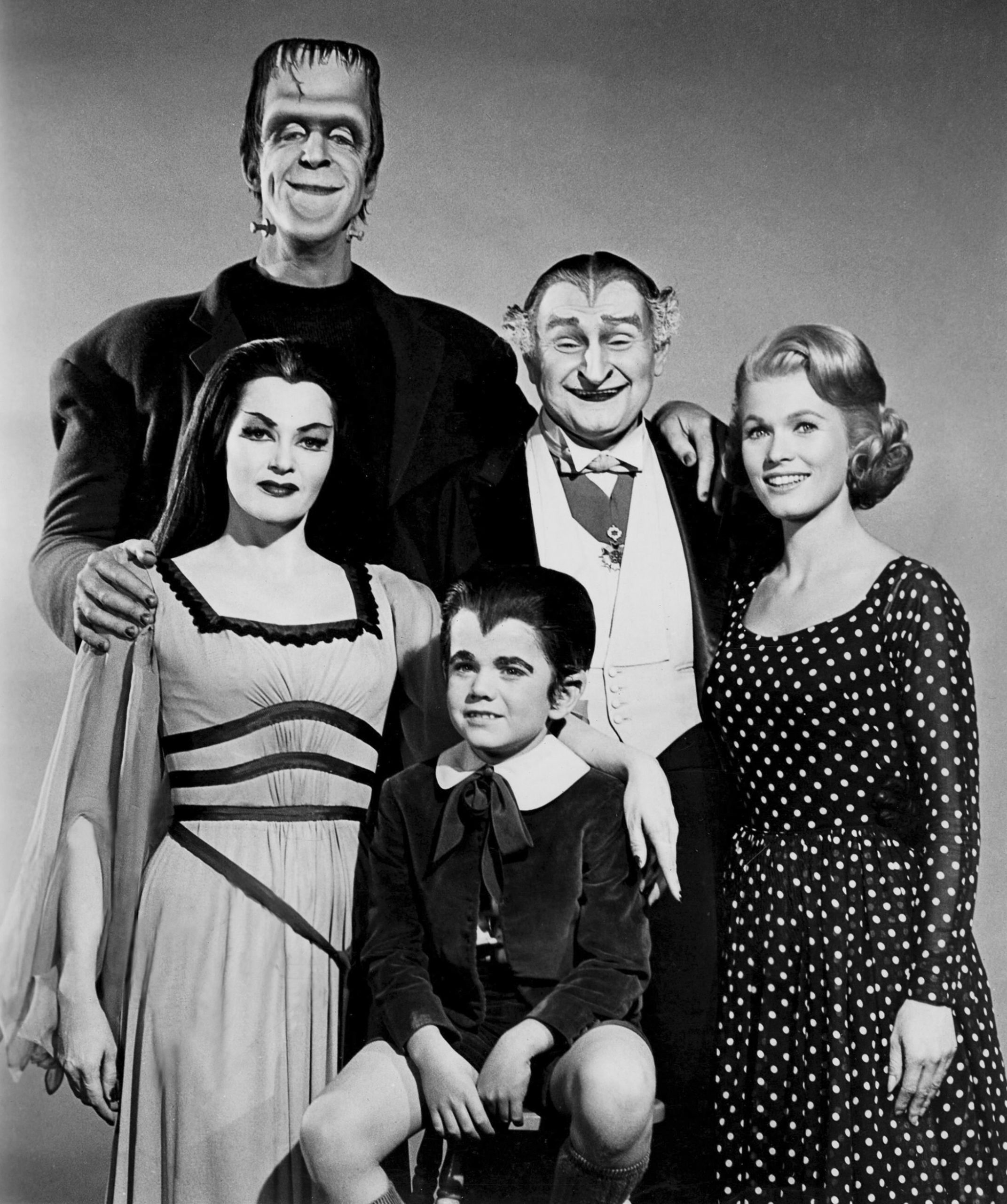
The woman on the far right is Marilyn Munster. As you can see, she doesn't quite fit with the rest of her family, poor thing.

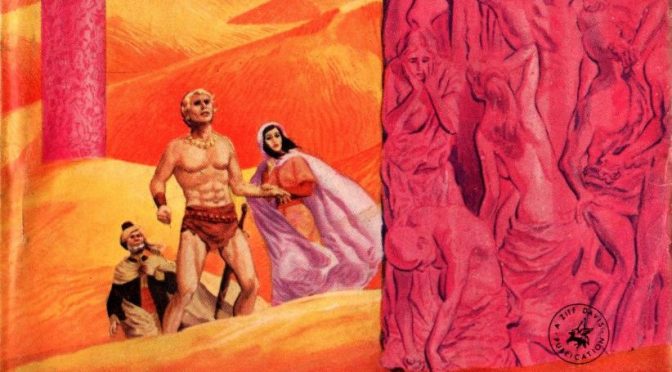
The Ashkenazy story here is actually rewrite of his one previously published fantasy tale, "The Headless Miller of Kobold's Keep" from the January 1937 WEIRD TALES. Which might have been acceptable if it had been so described in the FANTASTIC issue, but it wasn't (presumably the author pulled a fast one on the current editor by not telling her this, if anything with a 28-year gap involved can be called "fast").
I'm not sure if an author can be charged with plagirizing hirself, but if so this probably qualifies as an example. I like the story/stories, though.
Thank you for that very interesting information!
For some reason, I have the feeling that Jakes would have much more success in historical fiction. Just a feeling.
I thought Leiber's essay started well, but went meandering all over the place and never quite went anywhere. A pity, since he certainly knows a lot about the material and ought to have a lot to say on the subject.
I'm starting to warm up to Brak. Like Victoria, I find the shorter pieces a lot more tolerable. I'm still not sure why we need a Conan pastiche, but OK.
"Mary, Mary" was quite good, and I don't find Young's more romantic fables all that OK in my book. So don't let Victoria's comparison put you off. This was very good and I hope we see more from this author.
The Disch was interesting. It certainly went off in an unexpected direction. He continues to be an author to keep an eye on.
The Sharkey was, by his lights, outstanding. That makes it simply a good story. It is nice to see him trying out something different. But you know who would have written this one better? Thomas Disch. Compare it to his "Descending" from last summer. Definitely readable, though.
"The Headsman" was tedious. It had some interesting elements, but it never quite came together properly. Denny's information explains a lot. As for the volcanic activity, perhaps the author misunderstood why the Smokies are called that.
Kate Wilhelm has actually been publishing for close to a decade and her talent shows. Having an editor "in house" so to speak is certainly an asset, but I doubt Knight has much to do. And maybe she can pull his writing a little more into the present (I'm thinking of that awful serial he had a while back). But I also hope they don't merge into one person, the way C.L. Moore and Henry Kuttner did.
Hey, this was a pretty good month for Ziff-Davis. Usually one or the other mag is subpar, but both were decent for once.
As usual the Brok story is an enjoyable light affair. Neither as dramatic nor as problematic as many other writers of similar tales.
Mary, Mary was rather wonderful. Thoroughly enjoyed that.
Disch is brilliant as usual. Fascinated to see what he does in his first full length novel later this year.
Sharkey continues to do nothing for me.
As noted elsewhere the Headsman was a disappointment.
Finally, the Wilhelm I found creative and well drawn but didn't quite click. Still a solid effort.
I have been hearing rumours that Fantastic and Amazing may be being sold to a new publisher. If this is true I hope it doesn't disrupt the kind of quality we are able to see in issues like this.